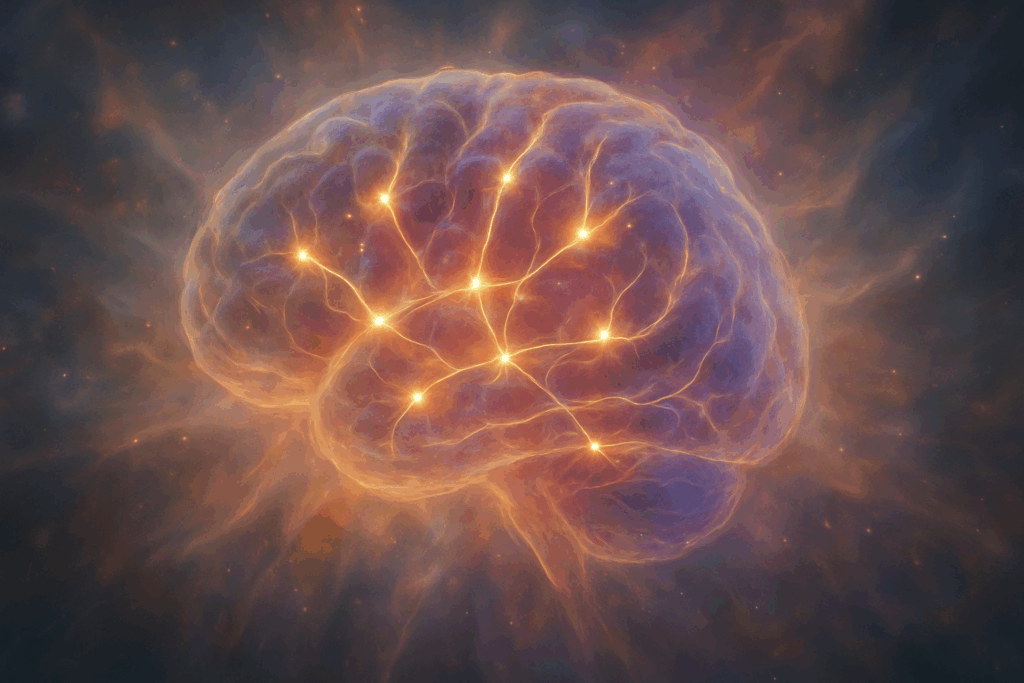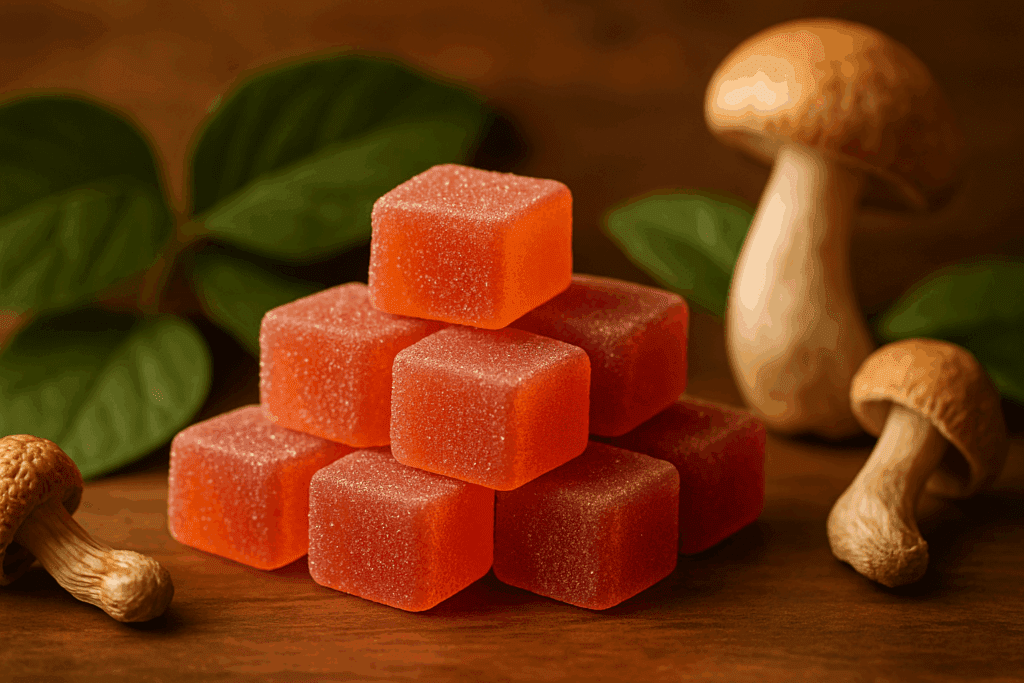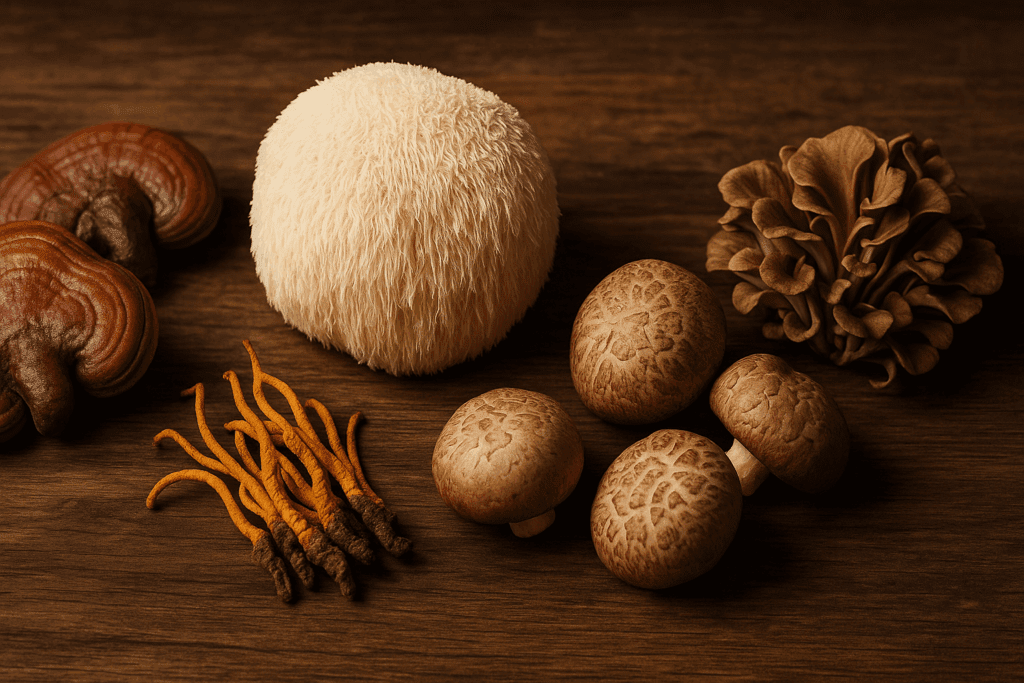Introduction: A Natural Path Toward Pain Management
In recent years, a growing number of individuals seeking alternatives to traditional pharmaceutical pain management have turned their attention toward nature’s pharmacy. Among the most intriguing of these natural remedies is the use of mushrooms for pain and inflammation. As research continues to evolve, questions like “do magic mushroom gummies relieve pain” and “does mushrooms help with pain” have become central to discussions in both scientific and holistic health communities. This article explores the intersection between ancient wisdom and modern science, focusing on the potential role of microdosing mushrooms for pain, the promising research on psilocybin for pain, and the broader implications of psychedelics and chronic pain. With an emphasis on medically accurate information and a commitment to EEAT principles, we will delve into whether these natural fungi can truly offer relief and what considerations must be kept in mind.
You may also like: How Lion’s Mane Supplements May Support ADHD and Cognitive Clarity: What Science Says About Lions Mane for Focus and Brain Health
Understanding Mushrooms for Pain Relief: Ancient Roots and Modern Science
Historically, the use of mushrooms for pain and inflammation has roots in various traditional medicine systems, from Chinese herbal practices to indigenous healing rituals. Mushrooms like Reishi, Lion’s Mane, and Cordyceps have long been valued not only for their immune-boosting properties but also for their potential to modulate inflammation and discomfort. In the modern era, scientific exploration has expanded to include not just medicinal mushrooms but also psilocybin-containing species, whose psychoactive properties are now being studied for therapeutic effects on chronic pain conditions. Understanding the historical context enriches our appreciation of how the best mushroom for pain relief might integrate both ancient traditions and cutting-edge research.
Emerging studies suggest that certain mushroom compounds can interact with the body’s immune and neurological systems, helping to regulate inflammatory responses. This insight provides a scientific foundation for exploring questions such as “do mushrooms help with pain” beyond anecdotal evidence. Early research, for example, indicates that beta-glucans found in medicinal mushrooms may help reduce systemic inflammation, while psilocybin appears to influence pain perception at the neurological level, offering new hope for those struggling with chronic conditions.

Microdosing Mushrooms for Pain: A Gentle Yet Promising Approach
Microdosing involves consuming very small, sub-perceptual amounts of a psychedelic substance, typically about one-tenth of a recreational dose. Microdosing mushrooms for pain has garnered considerable interest, particularly among individuals with treatment-resistant chronic pain syndromes. The premise is not to induce a psychedelic experience but rather to harness the subtle neurochemical effects that may modulate pain perception, enhance emotional resilience, and improve overall well-being.
Early studies and anecdotal reports suggest that microdosing for pain might work by promoting neuroplasticity—the brain’s ability to rewire itself—which could be critical in resetting maladaptive pain pathways. Moreover, psilocybin’s interaction with serotonin receptors (particularly 5-HT2A receptors) may influence the brain’s pain processing centers, potentially leading to a diminished pain experience over time. While large-scale clinical trials are still in progress, the preliminary evidence supporting microdosing mushrooms for pain is compelling enough to warrant further exploration.
In practice, individuals interested in this approach often report following microdosing protocols such as the Fadiman method, which involves dosing every three days. Although self-reported outcomes suggest improvements not just in pain levels but also in mood and quality of life, it is critical to underscore that microdosing is not a universally effective or risk-free strategy. Consulting healthcare professionals familiar with psychedelics and chronic pain remains essential for those considering this avenue.
Psilocybin for Pain: Unlocking the Brain’s Healing Potential
Among the various compounds under investigation, psilocybin stands out for its profound effects on consciousness and potential therapeutic benefits. Clinical interest in psilocybin for pain has grown significantly, particularly concerning conditions like cluster headaches, fibromyalgia, and phantom limb pain. Psilocybin appears to modulate the default mode network (DMN) of the brain, a system involved in self-referential thoughts and, importantly, the experience of pain.
A landmark study published in Neurotherapeutics highlighted that individuals suffering from chronic pain experienced meaningful relief following psilocybin-assisted therapy. This relief often extended beyond the psychedelic experience itself, suggesting that psilocybin may catalyze lasting changes in neural circuits implicated in pain perception. This insight addresses the central question: “does mushrooms help with pain?” The answer, increasingly supported by science, appears to be a cautious but hopeful “yes.”
Importantly, psilocybin’s analgesic effects seem tied to its capacity to induce profound emotional and psychological shifts. By facilitating deep introspection and emotional release, psilocybin may help alleviate the psychological components of chronic pain, which are often as debilitating as the physical sensations themselves. However, it is crucial to emphasize that psilocybin therapy should only be undertaken in controlled, medically supervised environments to ensure safety and maximize therapeutic benefits.

Do Magic Mushroom Gummies Relieve Pain? A Modern Twist on an Ancient Remedy
The advent of magic mushroom gummies has made psilocybin consumption more accessible and palatable, particularly for individuals wary of consuming raw or dried mushrooms. But do magic mushroom gummies relieve pain effectively? The answer lies not so much in the form but in the active compound itself. Psilocybin, whether ingested via traditional mushrooms or modern gummies, exerts the same neurochemical effects that underpin its potential for pain relief.
However, there are practical considerations to keep in mind. Gummies offer a convenient dosing method, making it easier to adhere to a microdosing regimen aimed at managing chronic pain symptoms. Moreover, the controlled formulation of reputable gummies can reduce variability in psilocybin content, which is a common challenge with dried mushrooms. For individuals exploring mushrooms for pain and inflammation, magic mushroom gummies may provide a more consistent and user-friendly option.
That said, sourcing and legality are critical issues. In jurisdictions where psilocybin remains illegal, the use of magic mushroom gummies carries legal risks. Furthermore, quality control varies widely in the unregulated market, making it essential for users to exercise caution and seek products from reputable sources. As the landscape evolves, ongoing clinical trials may soon provide more definitive guidance on standardized psilocybin products for pain management.

Psychedelics and Chronic Pain: Reframing How We Understand Suffering
The relationship between psychedelics and chronic pain invites a broader reevaluation of how we understand and treat suffering. Chronic pain is not merely a symptom but often a complex interplay of physical, emotional, and neurological factors. Traditional painkillers, while sometimes effective, frequently fail to address the deeper psychological wounds that can perpetuate pain cycles.
Psychedelics like psilocybin offer a radically different paradigm. Rather than simply dulling pain signals, they appear to facilitate profound psychological healing, emotional catharsis, and cognitive restructuring. This multifaceted impact may explain why psychedelics and chronic pain research consistently yields promising, albeit preliminary, results. It also aligns with patient narratives describing not just reduced pain but a renewed sense of purpose, hope, and emotional freedom.
Interestingly, some researchers propose that psychedelics may temporarily “reset” the brain’s pain processing centers, breaking entrenched patterns of suffering. This hypothesis mirrors findings from studies on treatment-resistant depression, another condition marked by rigid, maladaptive brain activity. If this “reset” model proves valid, it could revolutionize how clinicians approach intractable pain disorders, making psychedelics a cornerstone of integrative pain management..

Best Mushroom for Pain Relief: Beyond Psilocybin
While psilocybin-containing mushrooms dominate headlines, it is important to recognize that other non-psychoactive mushrooms also hold promise for pain and inflammation. Identifying the best mushroom for pain relief depends largely on the nature of the condition being treated. For example, Reishi (Ganoderma lucidum) is prized for its anti-inflammatory properties, particularly in conditions like arthritis. Its triterpenoids and polysaccharides contribute to immune modulation and pain reduction.
Lion’s Mane (Hericium erinaceus), known for its nerve-regenerative properties, may be especially useful in cases of neuropathic pain. Studies have shown that Lion’s Mane stimulates the production of nerve growth factor (NGF), which supports neuronal health and could alleviate pain stemming from nerve damage. Similarly, Cordyceps (Cordyceps militaris) has demonstrated anti-inflammatory and anti-fatigue effects, making it a potential ally for individuals with chronic pain syndromes compounded by physical exhaustion.
When considering mushrooms for pain and inflammation, it becomes clear that a one-size-fits-all solution is unlikely. Instead, an integrative approach that combines psychoactive and non-psychoactive mushrooms—tailored to the individual’s needs and supervised by knowledgeable healthcare providers—may offer the most comprehensive relief.
Challenges, Risks, and Considerations in Using Mushrooms for Pain
Despite the optimism surrounding mushrooms for pain relief, it is essential to approach this field with a balanced perspective. Psilocybin, while generally considered physiologically safe, can induce psychological side effects such as anxiety, paranoia, or emotional distress, particularly in unsupervised settings. This risk is heightened in individuals with a history of psychotic disorders.
Moreover, the legal status of psilocybin varies dramatically across jurisdictions, posing potential legal and ethical challenges for users and practitioners alike. For those considering microdosing mushrooms for pain or exploring magic mushroom gummies, understanding the legal landscape is a critical first step.
There are also practical considerations regarding dosage, strain variability, and individual biochemistry. The effects of psilocybin and other mushroom compounds can vary widely among individuals based on factors such as genetic makeup, psychological history, and concurrent medication use. Therefore, personalized, medically informed approaches are vital to ensuring safety and efficacy.

Frequently Asked Questions (FAQ) on Mushrooms for Pain and Inflammation
Can microdosing mushrooms for pain offer long-term benefits?
Emerging studies suggest that microdosing mushrooms for pain may provide long-term improvements by promoting neuroplasticity, helping the brain rewire pain pathways. While initial effects often include mood elevation and decreased pain perception, ongoing microdosing regimens might foster more profound changes in emotional resilience and cognitive flexibility. Some users report sustained reductions in chronic pain symptoms even after discontinuing microdosing protocols. However, research is still evolving, and individual outcomes can vary widely. Combining microdosing mushrooms for pain with mindfulness practices and professional guidance may enhance the likelihood of lasting benefits.
How do magic mushroom gummies differ from other forms in pain management?
When asking “do magic mushroom gummies relieve pain,” it is important to recognize that the form of ingestion can influence the experience. Gummies offer more consistent dosing compared to raw or dried mushrooms, reducing the risk of unexpected intensity or duration of effects. Their palatability and ease of use make them particularly attractive for people managing chronic pain who may also struggle with nausea or taste sensitivities. Moreover, many find that microdosing with magic mushroom gummies leads to fewer digestive issues compared to whole mushrooms. As accessibility increases, gummies may become a preferred tool for those exploring mushrooms for pain relief in a controlled and predictable way.
Are certain mushrooms better for nerve pain compared to inflammatory pain?
Identifying the best mushroom for pain relief depends largely on the type of pain being treated. Lion’s Mane, for instance, appears particularly suited for nerve pain due to its ability to stimulate nerve growth factor (NGF) production. In contrast, Reishi is more commonly used to manage systemic inflammation, making it beneficial for inflammatory conditions like arthritis. While psilocybin for pain shows promise across various chronic conditions, tailoring mushroom use to the underlying cause of pain is critical for optimal outcomes. Understanding the distinct biological actions of different mushrooms helps maximize therapeutic potential.
How does microdosing for pain interact with emotional healing?
Microdosing for pain often leads to unexpected emotional benefits that go hand in hand with physical relief. Chronic pain is intricately linked to emotional distress, and low-dose psychedelics can foster emotional processing and release. People practicing microdosing mushrooms for pain frequently report increased patience, emotional resilience, and a reduction in anxiety—all of which indirectly ease the burden of persistent pain. By addressing the psychological dimensions of suffering, microdosing may offer a more holistic path toward recovery. Emotional shifts, while subtle, can have profound implications for overall pain management.
What are potential future developments in psychedelics and chronic pain treatment?
The field of psychedelics and chronic pain is rapidly evolving, with upcoming clinical trials exploring psilocybin-assisted therapy for fibromyalgia, phantom limb pain, and even post-surgical recovery. Researchers are developing specialized psychedelic compounds designed to maximize pain-relieving properties while minimizing hallucinogenic effects. Innovations like transdermal delivery systems for psilocybin are being studied to provide steady, controlled dosing. As regulatory frameworks evolve, we may see personalized psychedelic therapies based on genetic profiles to fine-tune mushrooms for pain treatment. The future promises a more precise, accessible, and medically supervised use of psychedelics for pain and inflammation.
Does mushrooms help with pain differently depending on the individual’s pain type?
The question “does mushrooms help with pain equally across all conditions?” does not have a one-size-fits-all answer. Psilocybin may be highly effective for neuropathic pain, while anti-inflammatory mushrooms like Reishi and Cordyceps might better suit autoimmune-related pain. Individual biochemistry, the chronicity of pain, and psychological state all influence outcomes when using mushrooms for pain and inflammation. Personalized approaches that consider these variables are crucial for success. Future clinical frameworks will likely focus on tailoring mushroom therapies to specific pain etiologies rather than using a generic model.
Are there social or psychological risks associated with using mushrooms for pain?
While mushrooms for pain offer promising avenues for relief, they also come with social and psychological risks that warrant attention. Stigma remains a significant barrier, potentially discouraging individuals from seeking guidance or sharing experiences openly. Psychologically, even small doses can occasionally trigger anxiety or resurfacing of past trauma, particularly in emotionally sensitive individuals. Ensuring that microdosing or larger therapeutic experiences are conducted with adequate preparation, support, and aftercare minimizes these risks. Acknowledging these social dynamics is essential for creating safer, more supportive environments for healing.
What role does integration therapy play after using psychedelics for chronic pain?
Integration therapy is crucial after using psychedelics for chronic pain because it helps translate transformative experiences into sustainable behavioral and emotional changes. Without structured integration, insights gained during psilocybin experiences may fade or fail to be applied in daily life. Professional integration therapists assist individuals in contextualizing shifts in their pain perception, emotional patterns, and self-identity. They also help create personalized strategies for maintaining improvements achieved through using mushrooms for pain. Integration ensures that psychedelics are not a one-time intervention but part of an ongoing healing process.
How does the inflammatory response factor into the success of using mushrooms for pain and inflammation?
The body’s inflammatory response plays a critical role in how mushrooms for pain and inflammation exert their effects. Chronic inflammation can sensitize pain pathways, making even minor injuries feel overwhelming. By modulating inflammatory cytokines and enhancing immune system balance, mushrooms like Reishi, Turkey Tail, and Cordyceps help reduce this hypersensitization. Psilocybin for pain, meanwhile, seems to reduce neural inflammation, which may explain its rapid onset of relief in some cases. An integrated anti-inflammatory strategy, incorporating both dietary choices and mushroom supplementation, may yield even greater pain relief outcomes.
Can combining different mushrooms enhance pain management outcomes?
Combining different types of mushrooms—both psychoactive and medicinal—may provide synergistic effects that enhance overall pain relief. For example, microdosing psilocybin alongside daily Reishi supplementation might simultaneously address neurological and inflammatory pain components. Stacking strategies are gaining popularity, although formal research remains limited. Such approaches allow individuals to customize their regimen based on specific symptoms and life circumstances. When thoughtfully combined under professional guidance, different mushrooms for pain can offer a more comprehensive and nuanced healing journey.

Conclusion: Reimagining Pain Management with Mushrooms and Psychedelics
As scientific understanding deepens, the question “do mushrooms help with pain” is increasingly being answered with cautious optimism. From ancient traditions to cutting-edge neuroscience, mushrooms for pain and inflammation represent a fascinating convergence of old and new knowledge. Whether through microdosing mushrooms for pain, exploring the potential of psilocybin for pain, or investigating whether magic mushroom gummies relieve pain effectively, there is undeniable momentum toward reimagining pain management.
Yet, this journey is not without its complexities. Issues of legality, individual variability, and the need for more rigorous clinical research must temper our enthusiasm with careful, responsible exploration. For those seeking the best mushroom for pain relief, the answer may lie not in a single species or product but in a holistic, integrative approach that honors both science and personal experience.
In the end, the growing exploration of psychedelics and chronic pain offers a powerful reminder: healing is as much about restoring the mind and spirit as it is about alleviating physical symptoms. As we stand at the frontier of this promising field, continued research, open-mindedness, and respect for both tradition and innovation will be essential in unlocking the full potential of mushrooms for pain relief and human flourishing.
Was this article helpful? Don’t let it stop with you. Share it right now with someone who needs to see it—whether it’s a friend, a colleague, or your whole network. And if staying ahead on this topic matters to you, subscribe to this publication for the most up-to-date information. You’ll get the latest insights delivered straight to you—no searching, no missing out.
Further Reading:
Microdosing psilocybin for chronic pain: a case series
Works Like Magic: Magic Mushrooms as Therapy for Chronic Pain
What Are the Side Effects of Magic Mushrooms (Shrooms)? A Look at Short- and Long-Term Side Effects
Important Note: The information contained in this article is for general informational purposes only, and should not be construed as health or medical advice, nor is it intended to diagnose, prevent, treat, or cure any disease or health condition. Before embarking on any diet, fitness regimen, or program of nutritional supplementation, it is advisable to consult your healthcare professional in order to determine its safety and probable efficacy in terms of your individual state of health.
Regarding Nutritional Supplements Or Other Non-Prescription Health Products: If any nutritional supplements or other non-prescription health products are mentioned in the foregoing article, any claims or statements made about them have not been evaluated by the U.S. Food and Drug Administration, and such nutritional supplements or other health products are not intended to diagnose, treat, cure, or prevent any disease.


